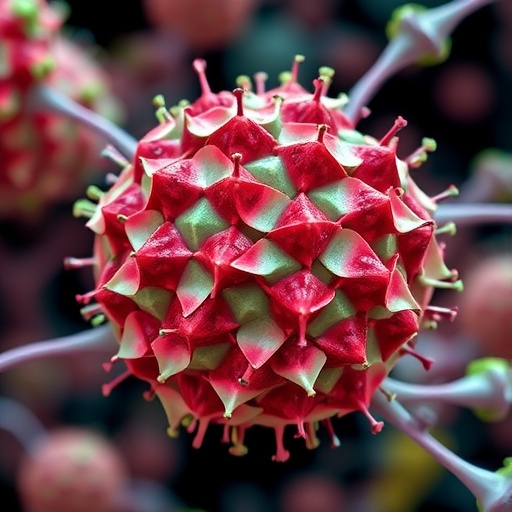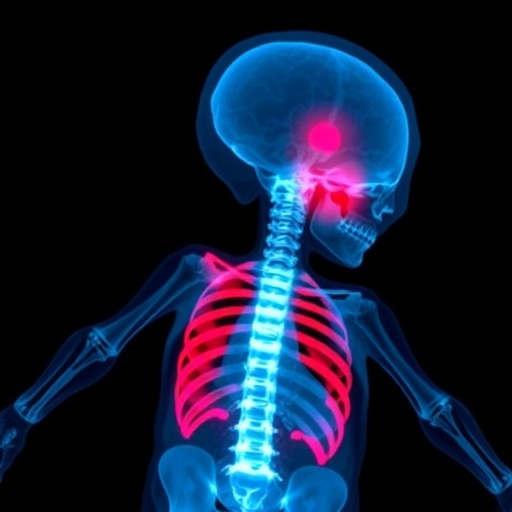In the race to deliver therapeutics to treat brain cancer and prevent recurrence, the blood-brain barrier represents a tremendous hurdle. But brain surgery offers a way to circumvent the blood-brain barrier, allowing direct access to the site of a tumor. Working together, researchers from Brigham and Women's Hospital (BWH) and neurosurgeons from Massachusetts General Hospital (MGH), along with colleagues at MIT, are designing a new, rapid molecular diagnostic and sustained release therapeutic that could be deployed during brain surgery to treat gliomas and prevent their return. Their results are published this week in the Proceedings of the National Academy of the Sciences.
"When a patient is in the operating room, there's an ideal opportunity to deliver therapy," said co-senior author Giovanni Traverso, MB, BChir, PhD, principal investigator and a physician-scientist at BWH. "But to provide the best possible therapy, we need to understand what genetic mutations we can target in that person's tumor. We're trying to develop a molecular diagnostic that can work fast enough to give us that information while the patient is on the operating table."
"The first and perhaps most important step in treatment of brain tumors is the initial operation, or craniotomy, which obtains tissue to make the diagnosis, and, for lower grade lesions, provides a therapeutic benefit from removal of the tumor mass," said co-senior author Daniel Cahill, MD, PhD, associate professor of neurosurgery at MGH. "Prior studies from our group, and others, have shown that aggressive surgery provides a substantial survival benefit for patients with lower-grade gliomas. We sought to build upon this surgical scenario, attempting to further prolong survival for these patients."
Lower grade gliomas, as opposed to high-grade gliomas such as glioblastoma, tend to initially be benign but can cause disability, seizures and fatality as they grow and compress normal brain tissue. Lower grade gliomas also frequently recur and, over time, can transform into malignant brain cancer as they acquire mutations.
Recent studies have found that many lower grade gliomas harbor IDH1 and IDH2 mutations – genetic alterations that may make cancer cells vulnerable to metabolic therapeutics. However, those therapies can have toxic side effects if delivered via traditional routes.
To overcome these challenges and take advantage of the unique opportunity offered when a patient undergoes surgery to remove a glioma, Traverso, Cahill and colleagues developed a rapid genetic test that can determine if a tumor harbors an IDH1 or IDH2 mutation or several other mutations. Using previously collected patient samples, the team tested their rapid genotyping assay and found that that they could detect mutations within 27 minutes. For 75 of the 87 clinically annotated brain tumor specimens tested, the team captured the presence of one or more mutations.
In addition to the rapid diagnostic, the team has also developed a sustained release microparticle drug delivery system that can provide localized treatment and sustained protection. The team tested this delivery system in a mouse model and reported significant improvements in survival time.
The team noted that further testing of the microparticle system is needed to select the optimal formulation to advance into future clinical trials. Exploring combination therapies could further improve the effects of their local therapy approach.
###
This work is supported by the American Brain Tumor Association Basic Research Fellowship, the Humor to Fight the Tumor Committee, SPORE grant P50CA165962, Burroughs Wellcome Career Award in the Medical Sciences #1007616.02, NIH grant EB-000244 and the Division of Gastroenterology, Brigham and Women's Hospital. A provisional patent application for this technology has been filed.
Massachusetts General Hospital, founded in 1811, is the original and largest teaching hospital of Harvard Medical School. The MGH Research Institute conducts the largest hospital-based research program in the nation, with an annual research budget of more than $900 million and major research centers in HIV/AIDS, cardiovascular research, cancer, computational and integrative biology, cutaneous biology, genomic medicine, medical imaging, neurodegenerative disorders, regenerative medicine, reproductive biology, systems biology, photomedicine and transplantation biology. The MGH topped the 2015 Nature Index list of health care organizations publishing in leading scientific journals and earned the prestigious 2015 Foster G. McGaw Prize for Excellence in Community Service. In August 2017 the MGH was once again named to the Honor Roll in the U.S. News & World Report list of "America's Best Hospitals."
Brigham and Women's Hospital (BWH) is a 793-bed nonprofit teaching affiliate of Harvard Medical School and a founding member of Partners HealthCare. BWH has more than 4.2 million annual patient visits and nearly 46,000 inpatient stays, is the largest birthing center in Massachusetts and employs nearly 16,000 people. The Brigham's medical preeminence dates back to 1832, and today that rich history in clinical care is coupled with its national leadership in patient care, quality improvement and patient safety initiatives, and its dedication to research, innovation, community engagement and educating and training the next generation of health care professionals. Through investigation and discovery conducted at its Brigham Research Institute (BRI), BWH is an international leader in basic, clinical and translational research on human diseases, more than 3,000 researchers, including physician-investigators and renowned biomedical scientists and faculty supported by nearly $666 million in funding. For the last 25 years, BWH ranked second in research funding from the National Institutes of Health (NIH) among independent hospitals. BWH is also home to major landmark epidemiologic population studies, including the Nurses' and Physicians' Health Studies and the Women's Health Initiative as well as the TIMI Study Group, one of the premier cardiovascular clinical trials groups. For more information, resources and to follow us on social media, please visit BWH's online newsroom.
Media Contact
Haley Bridger
[email protected]
617-525-6383
@BrighamWomens
http://www.brighamandwomens.org
http://dx.doi.org/10.1073/pnas.1805751115




